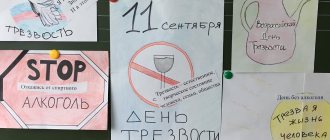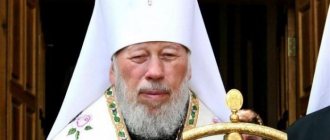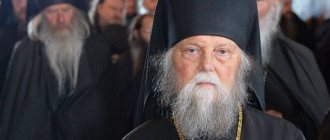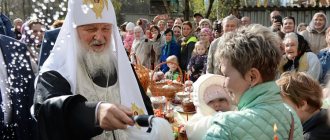| Ep. Solnechnogorsk Alexy (Polikarpov) on the day of his episcopal consecration, June 16, 2021 |
Alexy (Polikarpov)
(born 1948), Bishop of Solnechnogorsk, vicar of the Patriarch of Moscow and All Russia, abbot of the St. Daniel Monastery, secretary of the Supreme Church Court, member of the Inter-Council presence of the Russian Orthodox Church in the world Anatoly Stepanovich Polikarpov, born February 11, 1948 in the city Pervouralsk, Sverdlovsk region in a family of workers, S.I. and K.P. Polikarpov; baptized in February 1948 by Archpriest Hilarion Eremeev in the St. George Church in the village of Sloboda, Pervouralsk district, Sverdlovsk region.
After graduating from high school in 1966, he worked as an electrician at the Novotrubny plant in Pervouralsk. Thanks to communication with my grandmother, a deeply religious woman, as well as with nuns who went through persecution and exile and lived in the Sverdlovsk region, I decided to serve the Church in the priesthood.
In the 1960s, he was a subdeacon under Archbishop of Sverdlovsk and Kurgan Clement (Prestyuk) at St. John the Baptist Cathedral.
In 1969-1972 he studied at the Moscow Theological Seminary, in 1972-1976 - at the Moscow Theological Academy, from which he graduated with a candidate of theology degree for the essay “ Smart Doing in the Explanation of St. Simeon the New Theologian”
».
In September 1969 he was accepted into the ranks of the novices of the Trinity-Sergius Lavra.
On March 18, 1970, he was tonsured a monk and named in honor of St. Alexis, Metropolitan of Moscow.
On April 19 of the same year, he was ordained as hierodeacon by Archbishop Sergius (Golubtsov).
| Archim. Alexy (Polikarpov) |
On July 19, 1973, he was ordained hieromonk by Bishop Serapion (Fadeev) of Podolsk.
After graduating from the Moscow Theological Academy, he remained a resident of the Trinity-Sergius Lavra, serving as the assistant confessor of the Lavra, Archimandrite Kirill (Pavlov).
In 1981, on the occasion of Holy Easter, he was elevated to the rank of abbot.
On May 10, 1992, he was appointed abbot of the Moscow St. Danilov Monastery.
On May 24 of the same year he was elevated to the rank of archimandrite in the Assumption Cathedral of the Moscow Kremlin.
Since March 31, 1999, he has been a member of the Synodal Commission for the Canonization of Saints.
Since July 27, 2009 - member of the Inter-Council Presence of the Russian Orthodox Church.
Through the works of Fr. Alexy, an architectural department, icon painting, jewelry, bookbinding workshops, and the publishing house “Danilovsky Blagovestnik” were created in the monastery. During the years of his vicarage, a monument to the blessed Prince Daniel was erected near the monastery and a chapel was built in the name of this saint, churches were built in the monastery in the Ryazan region and in the monastery courtyard.
On May 30, 2021, he was elected Bishop of Solnechnogorsk, Patriarchal Vicar [1].
On June 13, 2021, he was named, and on June 16, he was consecrated Bishop of Solnechnogorsk. The consecration in the Trinity-Sergius Lavra was led by Patriarch Kirill of Moscow and All Rus'. Concelebrating with him were the metropolitans: Onufriy (Berezovsky) of Kiev and All Ukraine, Kirill (Pokrovsky) of Stavropol and Nevinnomyssk, Archbishop Ambrose of Vereya (Ermakov), bishops: Paramon of Sergiev Posad (Golubka), Thomas of Pavlovo Posad (Mosolov), Stefan of Klin (Privalov) ).
On December 26, 2021, he was appointed secretary of the Supreme Church Court of the Russian Orthodox Church [2].
Liturgy of the Faithful
Only the baptized can attend the Liturgy of the Faithful.
This part of the service begins with the recitation of a short litany, after which the choir sings the “Cherubic Song.” During its singing, the priest and deacon carry the chalice through the northern entrance and pray for the hierarchs of the Church, priests, monks and all those present. This is called the "great entrance."
Among the prayers that are heard during the Liturgy of the Faithful, two stand out: the “Creed” and the “Lord’s Prayer” (“Our Father...”). The first of them is a brief summary of Christian doctrine, and the second was given by the Savior himself. As a sign of special respect, these prayers are sung not only by the choir members, but by all parishioners led by the priest.
The culmination of the Liturgy of the Faithful is communion. First, the clergy receive communion in the altar, then the chalice is taken out of the altar, and the parishioners begin receiving communion. Children approach the bowl first, then adults. Approaching the chalice, Christians fold their arms crosswise on their chests, partake of the Holy Gifts and kiss the chalice, and then go to the table to wash down the communion with diluted wine (“warmth”).
Having thanked God for the sacrament, the priest announces the end of the liturgy with the words: “We will depart in peace!”, and the choir sings: “Blessed be the name of the Lord from now on and forever.”
As a rule, at the end of the Divine Liturgy, the priest delivers a sermon. It explains in detail the content of the passage from the Gospel that was read during the service.
Parishioners take turns approaching the priest and kissing the cross he holds in his hands. After this, the Christians leave the temple.
Proceedings[ | ]
articles
- On the fight against passions // Journal of the Moscow Patriarchate. 1973. - No. 3. - P. 38-39
- About spiritual joy (on 1 Thess. 5.16) // Journal of the Moscow Patriarchate. 1978. - No. 7. - P. 40-41.
- Homily on Trinity // “Danilovsky Blagovestnik”. 1992. - Issue. 4. - pp. 60-62;
- Stronghold of the Holy Abodes // “Monuments of the Fatherland”. 1997. - No. 37 (1). - pp. 52-66;
- Merry Christmas! // “Monuments of the Fatherland.” 1999. - Issue. 10. - P. 3.
- Archdeacon Roman (Tamberg) // Journal of the Moscow Patriarchate. 1999. - No. 3. - P. 73-77.
- Russian spiritual education and monasticism // Collection of plenary reports of the VIII International Christmas educational readings. - M.: Department of Religious Education and Catechesis of the Russian Orthodox Church, 2000. - 280 p. - pp. 156-163.
- Russian spiritual education // “Sunday School”, newspaper. 2002. - No. 33, p. 8-9.
- In memory of schema abbot Mikhail (Zamyatin) // Journal of the Moscow Patriarchate. 2002. - No. 3. - P. 65-66
- Full creative development of the individual is a priority task of the Church // Collection of plenary reports of the X International Christmas educational readings. - M.: Department of Religious Education and Catechesis of the Russian Orthodox Church, 2002. - 352 p. - pp. 99-106
- Schemamonk Mikhail (Karelin) // Journal of the Moscow Patriarchate. 2003. - No. 12. - P. 30-33.
- Report by the abbot of the St. Danilov Monastery, Archimandrite Alexy (Polikarpov) “The Legacy of the Holy Prince Daniel in Russian History” at the conference “The Holy Blessed Prince Daniel and his Monastery in the History of Moscow and Russia” // “Church Bulletin”, September 11, 2003
- Archimandrite Alexy (Polikarpov): About the monastery in the city and his monastery // patriarchia.ru, June 1, 2013
books
- Danilov's word. [sat. sermons]. - Moscow: Danilov Monastery: Danilovsky Blagovestnik, 2009. - 222 p. — ISBN 978-5-89101-310-0 (along with other authors)
- Serving others to find yourself...: a conversation with young people. - Moscow: Danilov Monastery: Danilovsky Blagovestnik, 2010. - 91 p. — ISBN 978-5-89101-396-4
- Live with Christ. - Moscow: Danilovsky Blagovestnik, 2012. - 284 p. — ISBN 978-5-89101-484-8
- Remember your mentors: memories of Archimandrite Kirill (Pavlov). — Moscow: Danilov Monastery, 2021. — 125 p. — ISBN 978-5-89101-644-6 — 3,000 copies.
interview
- The disease of our time is indifference. Part 1 // pravoslavie.ru, April 17, 2006
- The disease of our time is indifference. Part 2 // pravoslavie.ru, April 18, 2006
- You can come here with any question // Russian Monk Magazine, May 2008, p. 43
- Returning home // Russian Monk Magazine, October 2008, p. 11
- A good deed is not a hindrance to prayer // Journal “Orthodoxy and Modernity” No. 18 (34), 2011
- Father Alexy (Polikarpov): “People must love each other, they must love Christ” // “Arguments and Facts”, August 21, 2011
- Archimandrite Alexy (Polikarpov): “This is just love” // pravmir.ru, January 31, 2013
- Interview with the Viceroy of the Danilov Monastery, Archimandrite Alexy (Polikarpov) video, March 26, 2019
How are the services held?
Services are held daily in the main building of the temple. At 8.30 - Divine Liturgy, at 16.00 - evening service.
In the Gospel of Matthew, the Lord says: “For where two or three are gathered in My name, there I am in the midst of them” (Matthew 18:19). In every Orthodox church, the Lord is visible and tangible. When wine and bread are transformed into the Blood and Body of Christ during the sacrament of the Eucharist.
The temple doors are open to everyone from 8:00 a.m. to 8:00 p.m. The priest on duty, who is in the cathedral from 11 a.m. to 8 p.m., will answer all questions of interest to parishioners. Perform the Sacraments and Requirements. To communicate with the Sochi temple there is e-mail. Duty phone number.
filaretuos
Friends and enemies
October 18. Cathedral of Moscow Saints
Celebration on one day in honor of All-Russian Saints Peter
,
Alexy
and
Jonah
was established by the holy Patriarch Job on October 5, 1596.
Subsequently, the names of their holy heirs began to be added to the host of Moscow high priests. Saint Philip
was numbered among them in 1875 at the request of the Metropolitan of Moscow, Saint Innocent, and
Saint Hermogen
- in 1913.
Until the end of the 20th century, the memory of these five saints was honored by the cathedral celebration of the miracle workers of Moscow and all Russia. Then the names of seven other Moscow saints were also included in the Council. Thus, as of 2013, the Council already included 12 saints, and today the Orthodox Church glorifies 13 Moscow saints
.
Awards[ | ]
Secular
- Order of Friendship (August 11, 2000) - for his great contribution to strengthening civil peace and the revival of spiritual and moral traditions
[8] - Commemorative medal “Patriot of Russia” (Russian State Military Historical and Cultural Center under the Government of the Russian Federation, 2007)[9]
Church
- Order of the Holy Blessed Prince Daniel of Moscow, 1st degree (ROC, March 17, 2008)[10]
- Order of St. Sergius of Radonezh, II degree (ROC, February 11, 2013)[11]
- Order of the Holy Blessed Prince Daniel of Moscow, III degree (February 11, 2018) - “in consideration of diligent service” and in connection with the 70th anniversary of his birth[12]
- medal “In memory of the 100th anniversary of the restoration of the Patriarchate in the Russian Orthodox Church” (December 26, 2018)[13]
Rules for visiting the temple
As in other temples, out of respect for religious tradition, some important rules must be observed:
- Clothing: Men cannot enter in shorts. Women are advised to wear a scarf or stole on their heads (take them in your bag just in case). Shoulders must be covered for both men and women. It is not recommended to wear low-cut clothing or miniskirts.
- Masses: It is bad manners for tourists to visit an Orthodox church and wander around during religious services. The liturgy is very quiet, meditative, focused and ritualistic, so it is necessary to maintain silence in the temple. We should also not forget that believers always stand together during services.
- Photography is not allowed inside.
Everything that is useful for every tourist on a trip:
- You can find and book tours online at Travelata and Onlinetours.
- You can book and compare hotel prices on Hotellook. And the apartments are on Airbnb.
- You can choose the cheapest air ticket among all airlines on Aviasales, and a train ticket on Poezd.
- Find excursions around the world on Tripster.
- Buy insurance and not worry about your health at Cherehapa.
- Rent a car to see even more great places on Economybookings. Or a bike on BikesBooking.
- Book airport transfer Kiwitaxi.
How to get to the service
If you want to attend a service in the Cathedral of Christ the Savior, you need to study the schedule of events in this particular hall and come to the liturgy in advance. Some services take place at night, for example at Christmas and Easter. Considering that the cathedral is visited by top officials of the country and the number of parishioners who want to be at the great holidays, you need to come in advance and patiently wait for the opening of the temple.
In the summer, most of the services take place in the Church of the Transfiguration or the chapel of the Sovereign Icon of the Mother of God.
Christmas service
Christmas is a great event for the Orthodox and many Christians, not only residents of Moscow, want to visit the Cathedral of Christ the Savior at this time. In addition to the festive service, it hosts Christmas trees for children with an interesting and rich program.
If you can come to the service of the Nativity of Christ, which is performed by His Holiness Patriarch Kirill of Moscow, without an appointment, waiting for the doors in front of the church to open, then you need to sign up for the Christmas tree in advance by calling the administration of the Cathedral of Christ the Savior.
Before becoming a bishop, Alexy II was a parish cleric, rector, and archpriest
For three years from 1950 to 1953, the future Patriarch Alexy 2 combined the service of a parish cleric and study. After graduating from the academy, for his course work on Moscow Metropolitan Philaret, Riediger became the holder of a candidate of theology degree.
In 1957, Alexey served as rector of the cathedral in the city of Tartu.
In 1958 he was promoted to the rank of archpriest.
In August 1959, the archpriest lost his mother, after which he became a monk, receiving the name Alexy.
Alexey Ridiger. 50s
Our leaders need a second chance
Do you know a pastor who has sinned?
A new beginning is one of the most beautiful, hopeful and encouraging themes of the Gospel, running like a red thread through all of Holy Scripture. A new beginning is the hallmark of the saving, forgiving, regenerating, and transforming power of God's grace!
- For Moses, a new beginning was heralded by a voice coming from a burning bush, calling him to return to Egypt to free God's people. This time by God's power.
- For David, this is denunciation by the prophet, recognition of the horror he has created and the continuation of his reign.
- For Jonah, it was a whale's eruption onto the seashore, where he was tasked for the second time with bringing God's message to Nineveh.
- For Peter, a new beginning was made on the shores of the Sea of Galilee, where the Messiah whom he had betrayed forgave him and sent him to serve God again.
- The new beginning blinded Paul on his way to Damascus, where he received forgiveness and a commission brought by the somewhat intimidating messenger Ananias.
And when did the Savior give you the opportunity to start again?
The gospel of grace does not bind us to a fatal moment, does not curse us for a fatal decision. When it comes to pastoral ministry, by that same grace, leaders are able to rise from the ashes because the Savior has the power of resurrection.
What is the difference between the way we look at sin, weakness and mistakes in a leader and the way God looks at them?
I wonder, given the way we view leaders and the leadership community, would we accept those fallen biblical heroes back into service?
In none of the cases I cited was sin denied, hidden, or downplayed. In every situation, it seems as if what has been done is so serious that the sinner has no hope for the future.
In such situations, we tend to think that God is incredibly merciful, but He will nevertheless say: “This is the end of your service in My Kingdom.” But each of those people was restored to their former position as spiritual leader.
Today I want to ask you: are we doing the same? Are we guided by the Gospel in these matters?
We should never minimize a leader's sin or rush to trust him to his former leadership position if he has not yet examined his heart and resolved the internal problem. Of course, there are times when we should not restore a fallen leader to his position at all.
At the same time, we must hold on to our faith in the transforming, quickening power of God's grace. I know too many pastors who have sinned who have been cast out and now support their families working 9 to 5 jobs outside of the church because we don't practice what we preach.
Do we really believe in grace until the pastor needs it? May our hearts be filled with gratitude as we remember that we have all been quickened by God's grace, we are all quickened right now by that same grace, and we will all be fully quickened by Him who will not yield until His quickening grace transforms us completely in His image.
So let this heartfelt gratitude dictate our response to pastoral sin.
God bless you.
Paul David Tripp
Questions to Consider
- When did the Savior give you a second chance and a new beginning?
- Have you ever reacted negatively when someone needed the same grace that you so readily accept from Christ (and want others to show you)?
- Have you ever, after committing a sin, received grace and acceptance from another person? How did this affect your confession and repentance?
- Do you hold pastors and ministers to completely unrealistic standards? Are you able to see them as the same as everyone else in Christ?





